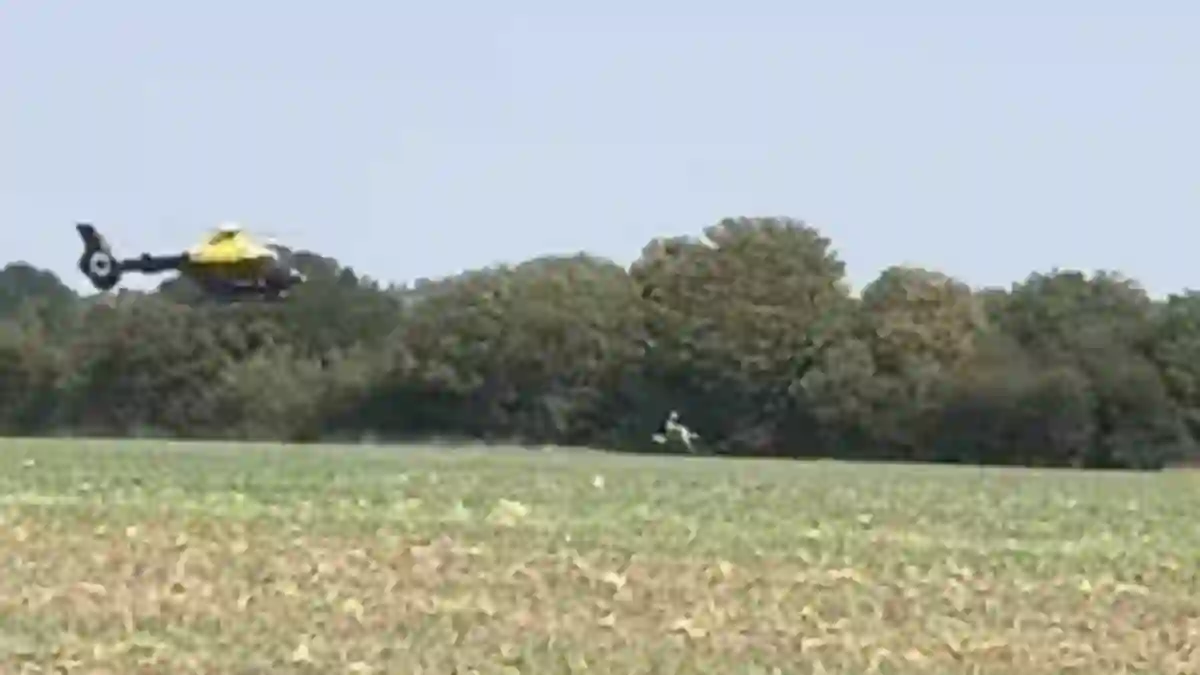A dramatic moment unfolded near St Helens when a police helicopter was spotted flying unusually low while pursuing a man on a stolen scrambler bike.
Footage circulating online shows the helicopter skimming just feet above the ground as it followed the rider through open fields, drawing attention for both the intensity of the chase and the pilot’s daring maneuvers.
Dangerous Riding Puts Public at Risk
Merseyside Police described the bike’s journey as “extremely dangerous.”
The rider allegedly sped along roads, mounted pavements, and narrowly avoided hitting a pedestrian.
At one point, a second man joined the chase on the bike as the pair attempted to evade officers along the A580 and through fields near a local dam.
Eventually, the second man dismounted and was detained on the ground, while the primary rider ran out of fuel and was arrested. The bike was seized by police.
TikTok videos of the incident show the helicopter tracking the bike through fields before disappearing behind a cluster of trees.
Police Review Footage and Procedures
The National Police Air Service (NPAS) confirmed that the August 13 incident is under internal review in consultation with the Civil Aviation Authority.
Chief Superintendent Fiona Gaffney said: “We’re aware of the video circulating on social media and the public interest it has generated.
We are thoroughly reviewing the circumstances to ensure all standards and procedures were followed.”
Looking to the Future: Unmanned Police Helicopters
While helicopters remain a core part of policing, the NPAS is exploring high-tech alternatives.
One such option is the unmanned Schiebel Camcopter S-100, capable of flying at up to 18,000 feet, reaching speeds of 115mph, and staying airborne for six hours.
The drone is larger than typical police drones and can carry mission equipment comparable to that of crewed helicopters.
David Walters, NPAS head of futures and innovation, explained that night-time test flights are being conducted over the Bristol Channel.
He added that future iterations of the drone could stay in the air for up to 12 hours.
“This trial will test uncrewed aircraft capable of flying for up to six hours, equipped with mission systems comparable to our current fleet,” Walters said.
Benefits of a Blended Fleet
If successful, these unmanned aircraft could become part of a blended fleet alongside traditional helicopters and planes, providing more flexible and sustainable policing options.
Walters noted that around 30 percent of NPAS calls involve searching for missing people, a task for which these drones could be invaluable.
Equipped with forward-facing cameras and radar systems, they allow operators to monitor operations remotely and detect other aircraft in the vicinity.
Modernizing Police Air Support
The move toward uncrewed aircraft represents a major step in modernizing police aviation.
“Our goal is to ensure the right tool is available at the right time, in the right place, to support policing across England and Wales,” Walters said.
The trials aim to deliver an innovative, efficient, and cost-effective air service capable of meeting the diverse needs of both law enforcement and communities.



